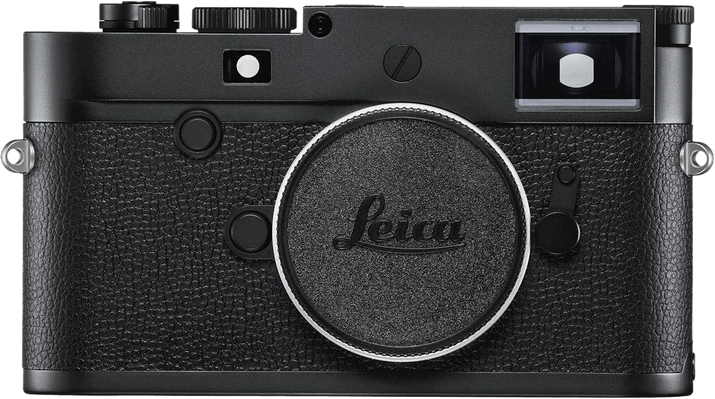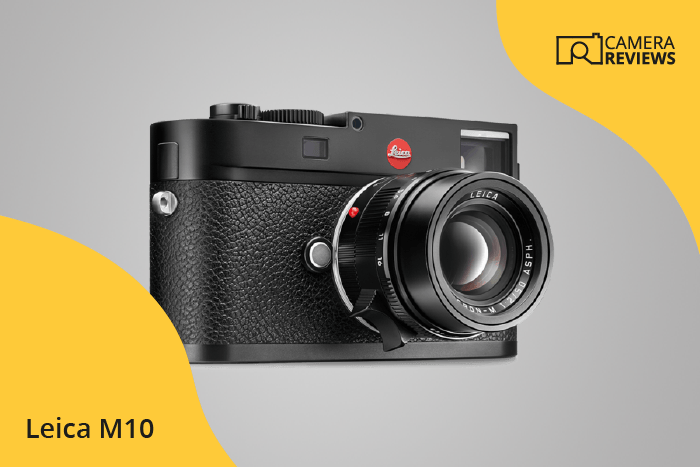Leica M10 Specs and Scores

The Leica M10 scores a 57 out of 100 in our evaluation. Launched in 2017 with a price tag of $6,895, this mirrorless camera measures 139 x 39 x 80mm and weighs 660g (1.46lbs). In today’s market, the M10’s specifications may not be the most competitive, but it still holds its own. The camera’s size and weight make it suitable for various shooting situations, and its build quality remains a strong point for the Leica brand.
Leica M10 Overview and Optics
The Leica M10’s optics score is 67/100. This camera features a 24-megapixel CMOS sensor with a Maestro II processor, providing a DXOMARK sensor score of 86. The full-frame sensor size and 3:2 aspect ratio contribute to the camera’s image quality.
The Leica M10 has a shooting speed of 5 frames per second, which is relatively slow compared to other cameras in the market. The lens mount is a Leica M, which offers compatibility with a wide range of high-quality lenses. However, the camera lacks image stabilization, which may result in blurry images when shooting handheld or in low light conditions.
Despite its limitations, the Leica M10’s optics still provide satisfactory performance for photographers who value simplicity and image quality. The camera’s full-frame sensor and compatibility with Leica M lenses make it an appealing choice for those who prioritize these aspects.
Leica M10 Video Performance
The Leica M10 lacks video capabilities, unlike most cameras. However, it has built-in time-lapse functionality.
Leica M10 Features and Benefits
The Leica M10 scores 44 out of 100 in the feature category. With a 3-inch screen and a resolution of 1036800 dots, it provides clear and sharp image previews. However, the lack of a touchscreen, flip screen, GPS, and Bluetooth may disappoint some users. On the other hand, the camera does include WiFi connectivity, allowing for easy sharing of photos.
In the competitive camera market, the Leica M10’s specifications place it behind other models that offer more advanced features. For instance, many modern cameras come equipped with touchscreens and flip screens, enhancing usability and versatility. Additionally, GPS and Bluetooth capabilities are becoming increasingly common, providing added convenience and functionality.
Despite these shortcomings, the Leica M10 remains a reliable and well-built camera that produces high-quality images. Its core performance and timeless design remain appealing to many photographers. However, those seeking the latest technological advancements may want to explore alternative options.
Leica M10 Storage and Battery
The Leica M10’s storage and battery performance receives a score of 13/100. This camera has a single memory card slot, which accepts SD, SDHC, and SDXC cards. In the current market, having only one memory card slot is less competitive, as most advanced cameras offer dual memory card slots for increased storage and backup options.
Regarding battery life, the Leica M10 can capture 210 shots with its BP-SCL5 battery. This number is lower than other cameras on the market, which usually provide longer battery life. Additionally, the camera does not support USB charging, making it less convenient for on-the-go users.
The Leica M10’s storage and battery specifications are not as strong as other cameras in today’s market. While its performance in other areas may be impressive, the storage and battery aspects leave room for improvement.
Leica M10 Alternatives
Do you want to know how the Leica M10 compares to its competitors? Have a look at the most popular comparisons for this camera below:
- Fujifilm X-T5 vs Leica M10
- Leica M Typ 240 vs M10
- Canon EOS 1D Mark IV vs Leica M10
- Leica M10 vs Nikon D850
- Leica M10 vs Nikon Z50
- Leica M10 vs Sony a7R V
Leica M10 FAQ
Does the Leica M10 Have Built-in Image Stabilization?
The Leica M10 does not have built-in image stabilization. Users will need to rely on lenses with stabilization or use a tripod for stable shots.
Does the Leica M10 Support 4K Video Recording?
The Leica M10 does not support 4K video recording as it lacks video functionality altogether, focusing primarily on still photography.
What Size Sensor Does The Leica M10 Have?
The Leica M10 features a full-frame sensor, providing exceptional image quality and low-light performance for professional photographers.
Does the Leica M10 Have a Dual Memory Card Slot?
The Leica M10 does not have a dual memory card slot, offering only a single SD card slot for storage.
Does the Leica M10 Have a Touch Screen?
No, the Leica M10 does not have a touch screen, relying on physical buttons and dials for camera settings and adjustments.
Does the Leica M10 Have Wi-Fi and Bluetooth?
The Leica M10 has built-in Wi-Fi for wireless image transfer and remote control, but it does not have Bluetooth connectivity.
Does the Leica M10 Have GPS?
The Leica M10 does not have built-in GPS functionality for geotagging photos or tracking locations.
Is the Leica M10 Weather Sealed?
The Leica M10 is not weather sealed, so it is advisable to protect the camera from moisture and dust during use.
Does the Leica M10 Have a Built-in Flash?
No, the Leica M10 does not have a built-in flash. Users can attach an external flash to the hot shoe if needed for additional lighting.

